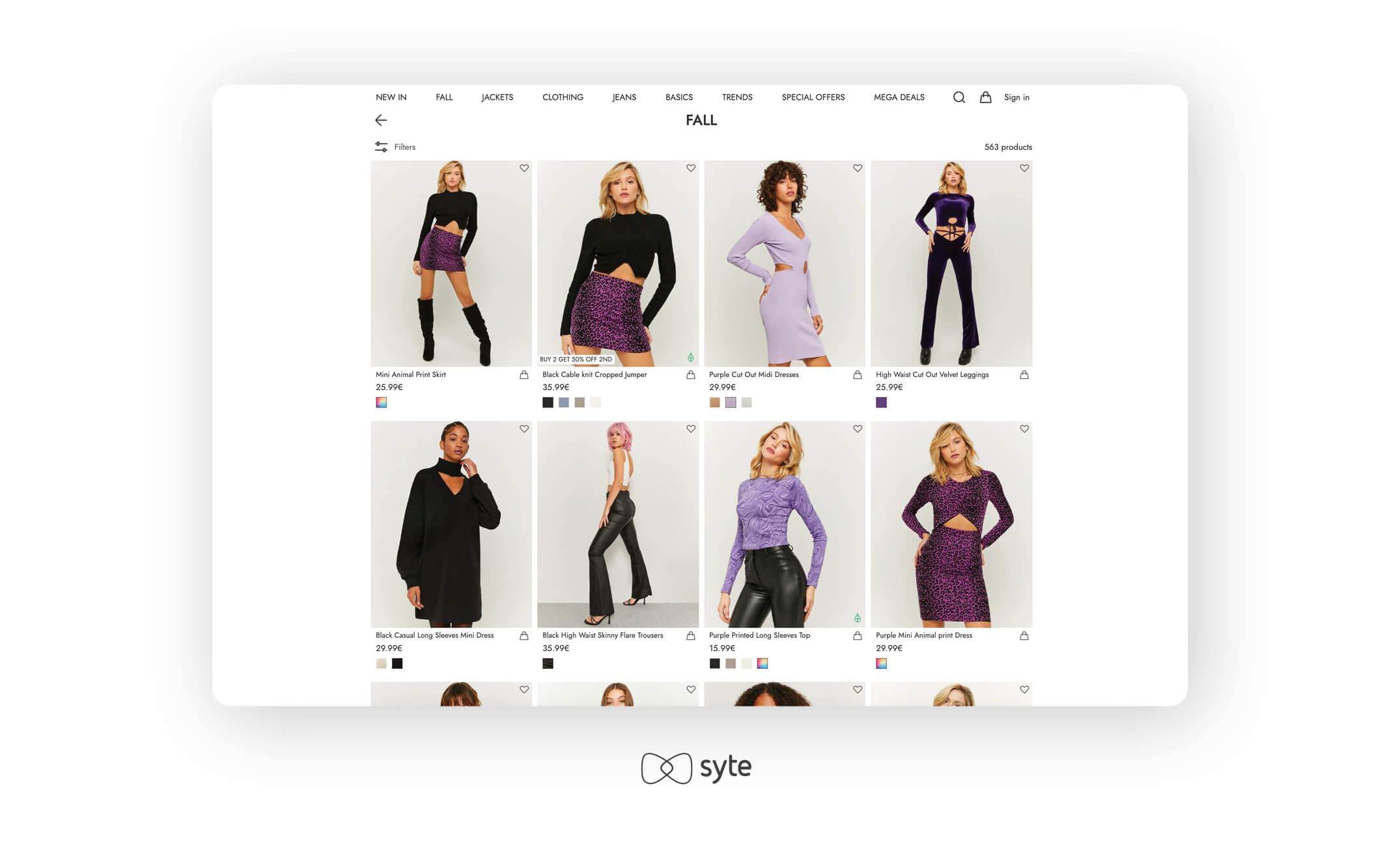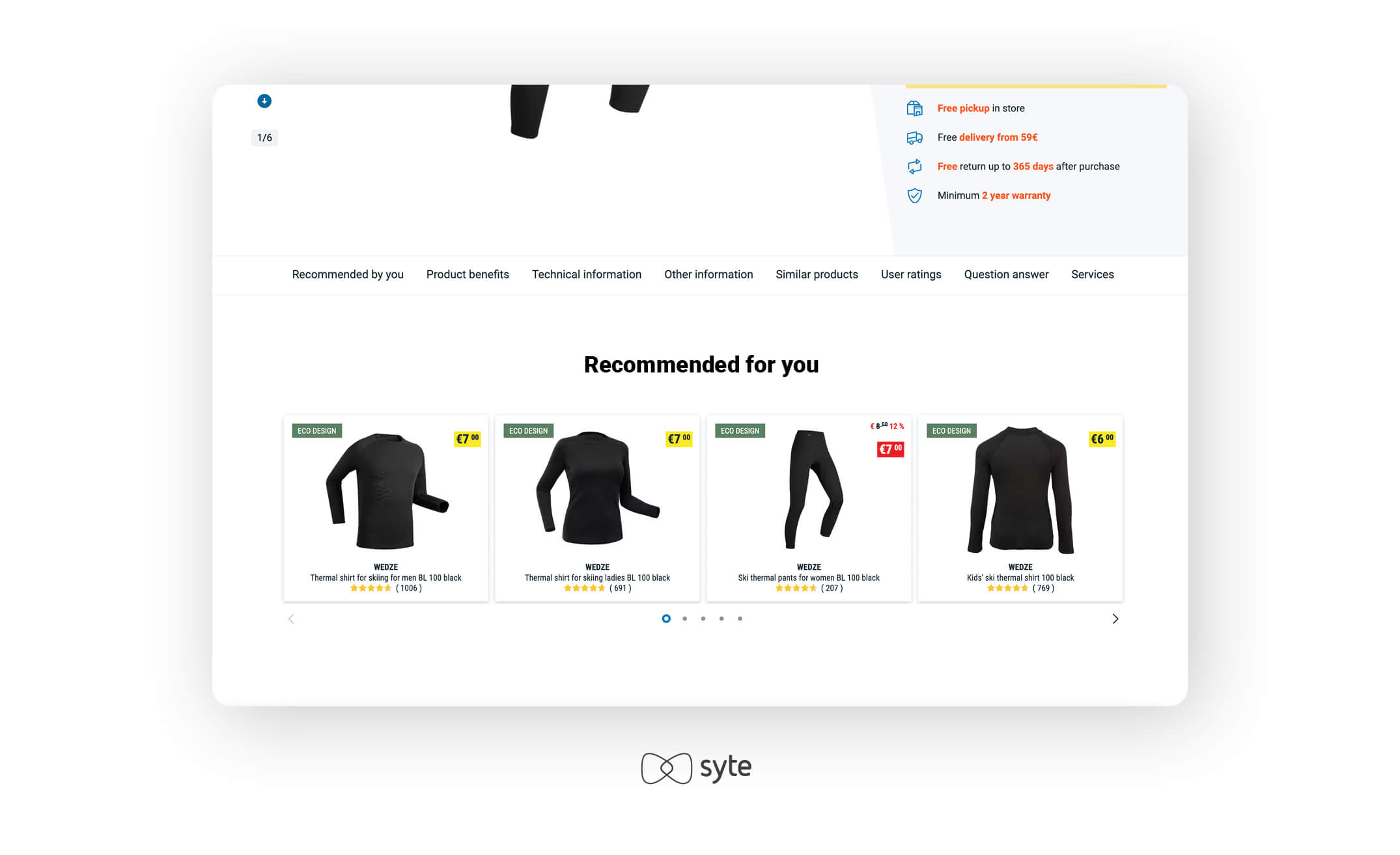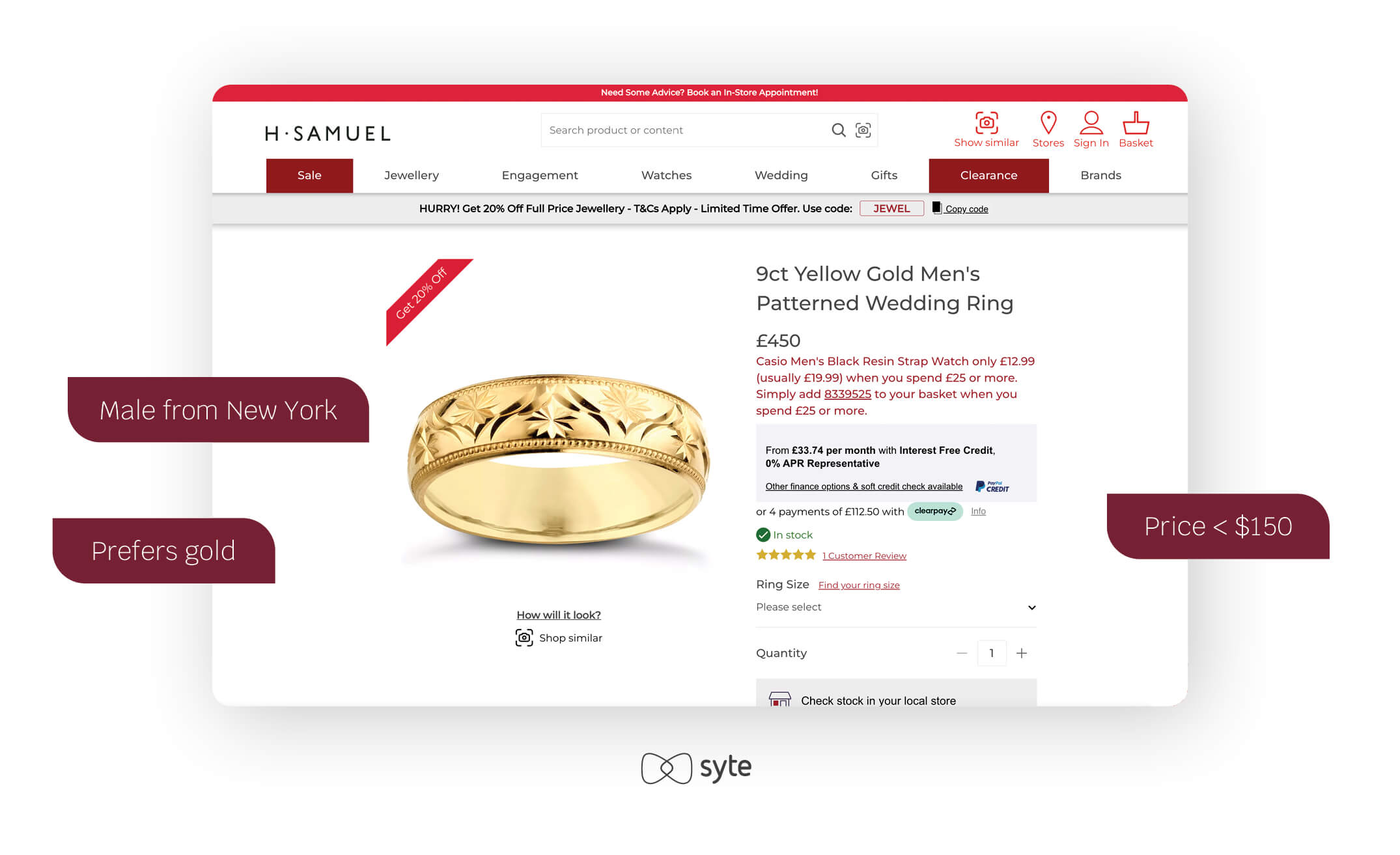Including ranking strategies as part of your merchandising rules is one of the most powerful tools that growing businesses can use to inspire purchases and drive conversion. And unlike your brick and mortar space, the opportunities to adjust and update your digital layout are limitless. Here are some ideas to use this flexibility to its greatest potential, turning your eCommerce presence into a high-performing sales channel.
Merchandising is a measured science, a delicate balance between engaging shoppers and getting eyes on the products you need to sell. Successful merchandising means displaying the most relevant products at the best place and time with appropriate pricing. To accomplish this, a number of factors are taken into consideration, such as customers’ experience, current sales, brand image, what’s happening in the economy, and product promotion.
A search for the perfect product doesn’t always end successfully for the user. In fact, recent research on the 149 top-grossing eCommerce sites in the US and Europe reports that 31% of all search tasks ended in vain. That’s why ranking strategies (controlling which products appear first) are so critical.

Ranking Strategies
Ranking strategies are a fabulously flexible way to deliver a highly personalized customer experience that helps you promote the most appropriate products to the most relevant customers.
By combining product data with your promotions calendar, you can configure ranking strategies for a variety of different parameters, including high or low stock availability (high or low), recently trending items, size availability, high margin items, items with positive reviews, or best sellers.
For example, on Syte’s Product Discovery Management Console, you can assign each of these parameters a weight, which will, in turn, assign a score to each SKU in your inventory, affecting the order in which they are displayed. Multiple ranking factors can then be combined and prioritized to enable the dynamic promotion of relevant items. Syte customer Falabella, Latin America’s largest department store, incorporated Merchandising Rules within its recommendation carousels to optimize the selection and order of items presented. They find it especially helpful for out-of-stock scenarios.
Similarly, European fashion retailer Tally Weijl launched Syte’s personalization solution to provide recommendations based on shoppers’ visual preferences and session history. Syte’s smart merchandising rules have also helped Tally to promote the right items. As a Gen Z brand, customers are highly attuned to Tally Weijl’s social media activity. When posts receive high engagement, Tally can automatically surface those items on its website with greater frequency through the product detail page (PDP) and carousels.
Having the ability to customize merchandising rules in your toolbox means that when a shopper performs a visual search, you can ensure the top results are SKUs with the most availability in your inventory. You can also choose to prioritize the most popular necklaces, end tables, or dozens of other parameters. These ranking strategies are your keys to customizing your merchandising rules and allow you the most flexibility in promoting different products. The end result is an enjoyable customer journey that generates more revenue and aligns with your end strategy.
Personalization
Providing customers with a valuable shopping experience makes them more likely to purchase. One of the most effective ways to do this is to become familiar with your customers’ shopping goals and personal preferences. Once you understand their tastes and desires, you can create and promote the right products through a customized shopping journey.
When global athleticwear brand Decathlon implemented Syte’s Visual Discovery and Hyper-Personalization solutions, shoppers got a clearer path to navigate through its extensive inventory. Decathlon layered Syte’s hyper-personalization technology over a gallery of inspirational photos within the Camera Search module. The Inspiration Gallery dynamically updates the display based on a customer’s current session activity, presenting them with only the most relevant options. The Visual Discovery Suite also includes Camera Search, the Discovery Button, and product recommendation engines that can all be customized using smart merchandising rules.

But how do you figure out your customers’ preferences? Although nobody likes to be put into a box, we all leave clues so we can be identified and categorized:
- How do your shoppers prefer to shop? Their preferred modes of finding products will dictate what you serve them. For example, focused, goal-oriented shoppers will benefit from a high level of personalization on search results pages, while those who are casually browsing may appreciate Recommendation Carousels to spark inspiration.
- Which personas do the most shopping on your site? They could be busy moms, teens looking for the latest trend, or husbands shopping for their wife’s birthday present.
- What contextual data can you gather about their intentions? The same shopper might look for kids’ pajamas one day and then return the next seeking a bathing suit for an upcoming vacation. Thus it’s not enough to suggest items based on previous visits; personalized recommendations that hit the sweet spot will need to be based on the shopper’s current session.
Once you’ve gotten your data in line, it’s easy to provide relevant product recommendations, content, and assistance at the right time. By including factors like prior shopping behavior, personal attributes, holidays, seasons or current weather, and trends, you can better anticipate your shoppers’ needs.

All this is the key to figuring out how to give your customers the most excellent experience and ultimately, convert them.
Omnichannel
In-person shopping has now returned for most of us, but the importance of omnichannel merchandising remains. Those online shopping habits we’ve developed are hard to break. Luckily, some things just work better in a digital format: personalization, targeted recommendations, or educational content like gift guides. Leading Chinese jewelry retailer Chow Sang Sang powered their omnichannel presence by implementing Syte’s visual AI algorithm, which specializes in jewelry, on their eCommerce store. Their shoppers were immediately able to follow their visual inspiration to easily find the items that best suited them. The impact was so significant that Chow Sang Sang’s retail store staff began to use Syte’s visual search on their internal inventory network to help shoppers find their ideal items in-store as well.
To get your eCommerce channels aligned, your best first step is to make your site mobile friendly. There are a few excellent and free tools online to assess your site’s mobile health. Your checkout process might also need an audit. A/B testing can be helpful to see where small CX improvements can make a big difference. Streamlining your shopper’s path to purchase will make it easier for them to complete their purchases.
Wrap-up
Whether you run your store on Magento, Shopify, or another ecommerce platform, there’s no one winning strategy that’s guaranteed to drive growth. Leveraging smart merchandising rules and ranking strategies to dynamically promote items is your best bet to keep your customers coming back.